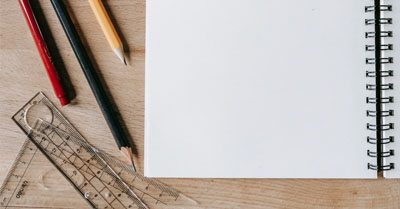Course Navigation
Laying Information Out on the Page
”Layout” refers to how text and other media are presented to the reader.
In both print and online media, it is important to arrange the information to make it easier for readers to get the information from the page.

Katerina Holmes | Pexels
How large is the font? Where are pictures or tables placed along with the text? How wide is the page? How many columns are there on the page? These are some design considerations when laying out information on the page as they can affect how readers will engage with and understand the information.
Layout Differences in Print and Online Media
In reading courses, you typically read passages that have well defined paragraphs. Each paragraph has a single main idea, with all details in the paragraph supporting that main idea.
Then you read a newspaper or article online, and the information does not look the same as in textbooks. That is so because printed and online texts are in different media. In printed media, paragraphs tend to be presented as blocks of text. Online texts, on the other hand, are laid out with a lot of white space to make the information easy to read on a computer screen or mobile phone.
When you have a block of text on a printed page, you can follow the text more easily than you can on a screen. You can even use your finger to follow the line as you read it. However, you keep losing track of where a line ends and the next begins on a screen, especially on very wide screens. As a result, a paragraph online is split into several shorter blocks of text.
For example, this information you are reading right now is just one paragraph. To make it easier for you to read, it was split into shorter blocks of text with white spaces in between.
Online Texts and Main Ideas
Although online texts are laid out differently, writers still organize the information around main ideas and details. The organization just does not “look” like the paragraphs in printed text.
When you read something online, you can use the same skills as you would when reading printed text. As you move through the text, ask yourself what the topic is and what the writer wants to say about it. You just need to be very attentive to changes in ideas. Whenever the writer starts “talking” about a different aspect of the main point of the passage, you have a new “paragraph” with a new main idea. It is just not laid out the same as it would be in printed text.
Headings also help writers organize different portions of the text. Pay close attention to those. Whenever you see a new heading, you know for sure that the writer is addressing a different aspect of the topic.
Up Next: Section 2. Study Skills in Reading
Writers write to communicate ideas. Our goal as readers is to understand the ideas writers put into writing. In the next section of this course, we will start discussing how we can use the information we read in order to learn the information well.
Go to the next lesson to learn about skimming and scanning.
Congratulations on completing “The Basics” section.

Thanks to our supporters!
This material has been made possible by supporters like you. Learn how you can support us.

“What should I learn next?”
Start the next section to learn about study skills in reading or use the “Navigate Course Sections" button below to choose another section.
Thank you for Supporting Snap Language
Snap Language supporters make the creation of these materials possible.
Learn how you can support our work, get perks, and help us continue creating high-quality materials.
You can support us by simply white-listing this site.